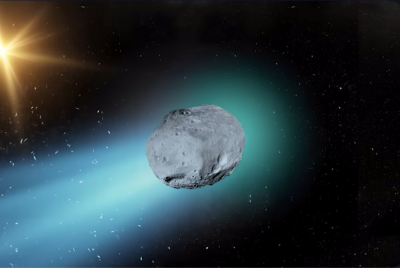Space: Astronomers Discover First 'Bizarre' Thorne-Zytkow Object Hybrid Star

Scientists have detected the first of a "theoretical" class of stars first proposed in the 1970s, in a breakthrough in understanding stellar interiors.
Thorne-Żytkow objects (TŻOs), which were initially proposed in 1975 by physicist Kip Thorne and astronomer Anna Żytkow, are hybrids of red supergiant and neutron stars.
They superficially resemble normal red supergiants, such as Betelguese in the constellation Orion, but differ in their distinct signatures that result from unique activity in their interiors.
"Studying these objects is exciting because it represents a completely new model of how stellar interiors can work. In these interiors we also have a new way of producing heavy elements in our universe. You've heard that everything is made of 'star stuff' — inside these stars we might now have a new way to make some of it," project leader Emily levesque, of the University of Colorado Boulder, told Phys.org.
TŻOs are thought to be formed by the interaction of two massive stars, a red supergiant and a neutron star formed during a supernova explosion, in a close binary system.
The most common theory suggests that during the evolutionary interaction of the two stars, the larger red supergiant essentially swallows the neutron star, which spirals into the core of the red supergiant.
While normal red supergiants derive their energy from nuclear fusion in their cores, TŻOs are powered by the unusual activity of the absorbed neutron stars in their cores.
The star was found using the Magellan Clay telescope on Las Campanas in Chile. The team examined the spectrum of light emitted from apparent red supergiants, which tells them what elements are present.
When the spectrum of the star HV 2112 in the Small Magellanic Cloud was first displayed, the astronomers noted its unusual features.
The team found that it contained excess rubidium, lithium and molybdenum. Large amounts of all three at temperatures typical of red giants is a feature of TŻOs.
"I am extremely happy that observational confirmation of our theoretical prediction has started to emerge," Anna Żytkow said in a statement quoted by Nature World News.
"Since Kip Thorne and I proposed our models of stars with neutron cores, people were not able to disprove our work. If theory is sound, experimental confirmation shows up sooner or later. So it was a matter of identification of a promising group of stars, getting telescope time and proceeding with the project."
"We could, of course, be wrong," co-author Philip Massey added. "There are some minor inconsistencies between some of the details of what we found and what theory predicts. But the theoretical predictions are quite old, and there have been a lot of improvements in the theory since then."
The study was published in Monthly Notices of the Royal Astronomical Society Letters.
© Copyright IBTimes 2025. All rights reserved.






















